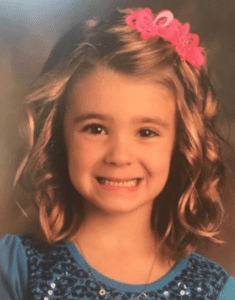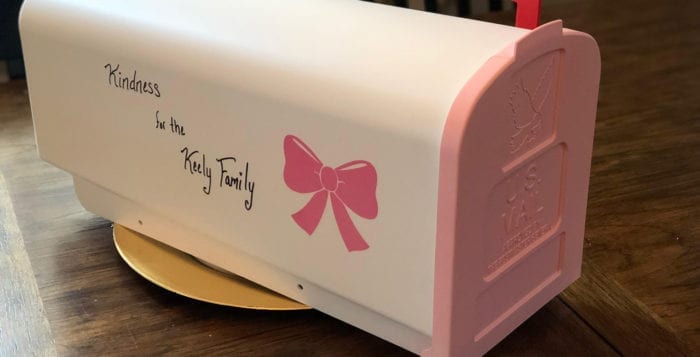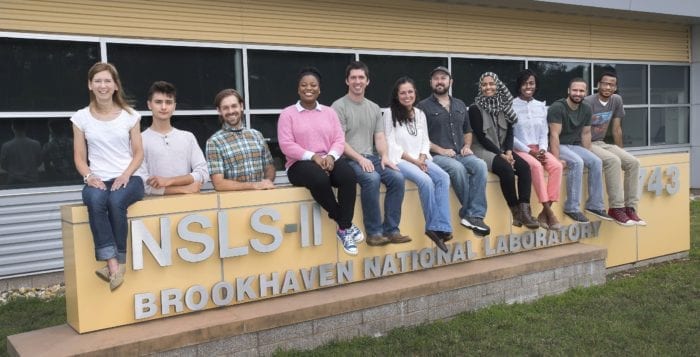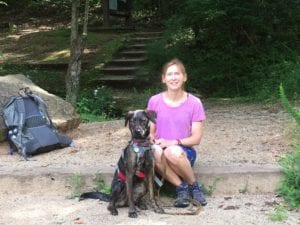This February, the St. James and greater Smithtown community is focused on sharing words of love and support to help one family through a difficult time.
One by one, cards and small care packages are finding their way to a pink and white mailbox, painted with the words “Kindness for the Keely family.” Each Friday, this mailbox, created by St. James Elementary Parent-Teacher Association, will be delivered to the family of Paige Keely.

The 6-year-old Paige — nicknamed “Paigey Bean” — was a first-grader at St. James Elementary School who died of a rare brain condition Jan. 8. Her parents, Tom and Gina Keely, are active members of the St. James community and have two other children, Maeve and Ronan.
“A big concern for all of us is once everything dies down and the dust settles, that the Keelys still feel supported by the community,” said Celina Murphy, president of St. James Elementary PTA. “No one’s forgotten them, we’re all still here.”
Pink ribbons can be spotted across the Smithtown Central School District tied to signs, poles, trees and even in high school cheerleaders’ hair in memory of Paige in the days after her death.
Business owners reached out to show their support. Commack resident Nicole Helfman, owner of Creative Cutz Design, made 350 vinyl decals for the school district so they could be put up in car windows and glass storefronts.
“For anyone who has kids, knows kids or is a teacher, it just hits home,” Helfman said. “People want to help out.”
Now, PTA members are passing a mailbox between buildings to collect donations of sympathy cards, gift cards, restaurant certificates, small care packages and other well wishes from community members for the Keely family. It will be at Nesaquake Middle School through Feb. 9, followed by Smithtown High School West from Feb. 12 to 16.
“The outpouring has been tremendous from the community both within the district and community at large,” said Mary Grace Lynch, principal of St. James Elementary School. “Within the district, the teachers, staff and administration have been incredibly supportive of the Keely family.”
Those who wish to send a sympathy card or donation, but do not have children in the school, can mail packages clearly marked “Kindness for Keely” to St. James Elementary School at 580 Lake Ave., St. James, NY 11780.
Lynch said the school will be constructing a butterfly garden in memory of Paige at the family’s request, once they are ready. The principal said she is confident with the number of Scout troops, high school teams and clubs who have reached out asking how to honor Paige’s memory. There will be no shortage of hands and support to construct the garden.
“That little girl has impacted so many, many people in her six short years of life,” Lynch said. “She’s had a profound and lasting effect on the community.”
The Kindness for Keely mailbox will be at: Accompsett Elementary School, Feb. 26 to March 3; Tackan Elementary, March 5 to 9; Mills Pond Elementary, March 12 to 16; Smithtown Elementary, March 19 to 23; Dogwood Elementary, March 26 to 30; High School East, April 9 to 13; Mount Pleasant Elementary; April 16 to 20; Accompsett Middle School, April 23 to 27; and Great Hollow Middle School, April 30 to May 4.







